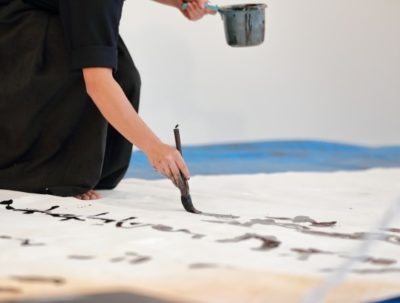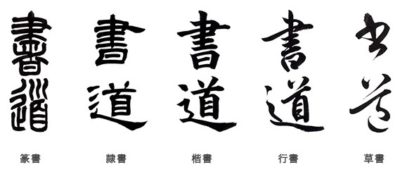
Calligraphy was first created by the prime minister of China, Li Si, during the Qin dynasty in 208 A.D. At the time pictographs were being inscribed on bone for religious purposes, but Li Si recognized a pressing need for a uniform script for administrative purposes. Li Si made it his goal to standardize this script during his reign: he decided all the horizontal strokes would be written first, and text would be drawn from bottom to top, and left to right.
The tradition of calligraphy was first brought to Japan by China in the 6th century A.D., as a means of communication between the two countries. Like many other Japanese arts, calligraphy was introduced to this island country from another culture. Ono no Michikaze was a prominent Japanese calligrapher, or Shodōka, who lived in the Heian period (794–1185) and is credited with founding the Japanese style of calligraphy, wayo, translated, “the Japanese way”. As with other inherited arts, the Japanese quickly made it their own, creating new styles and techniques indiginous to them.
Since calligraphy was first introduced to Japan, various styles of Shodo formed reflecting trends or the current ruler of the period. Furthermore, each calligrapher has their unique way of expressing that particular style. The three main types of Shodo styles widely practiced today are Kaisho, Gyosho, and Sosho.
Typically, Kaisho is considered the foundation for the other less formal styles and is taught first to give the Shodo student a proper feel for the art. Each stroke follows a rigid order, and the composition and proportions are carefully executed in this block style of writing.
Gyosho translates to “moving style,” which describes this less formal and rigid calligraphy. Gyosho is a cursive script widely used as the everyday handwriting style that focuses on motion and fluidity with less block-like characters.
Sosho is the most difficult type of calligraphy to master. The characters flow into one another, and are modified, or even eliminated, to create a smooth impression of writing. Shosho is used mostly in abstract works of art, to convey energy.
Since its introduction Shodo has been practiced by samurai, nobility, and ordinary people alike. To master calligraphic writing, though, takes decades and is valued as much as any other form of art. Well executed, Japanese calligraphy demonstrates, spirituality, rhythm, energy, and classic aesthetics, such as Yūgen, and Kire. A very important aspect of the Japanese culture, Shodo is introduced to Japanese children as early as elementary school.
Come Visit Art De Tama Fine Art!
Japanese artist in the United States. Tamao Nakayama was born and raised in Tokyo, Japan, and moved to the U.S. when she was 25 years old. She is still deeply influenced by the Japanese aesthetic, and the belief that ‘less is more’. She is a minimalist abstract artist. She paints and sculpts.
